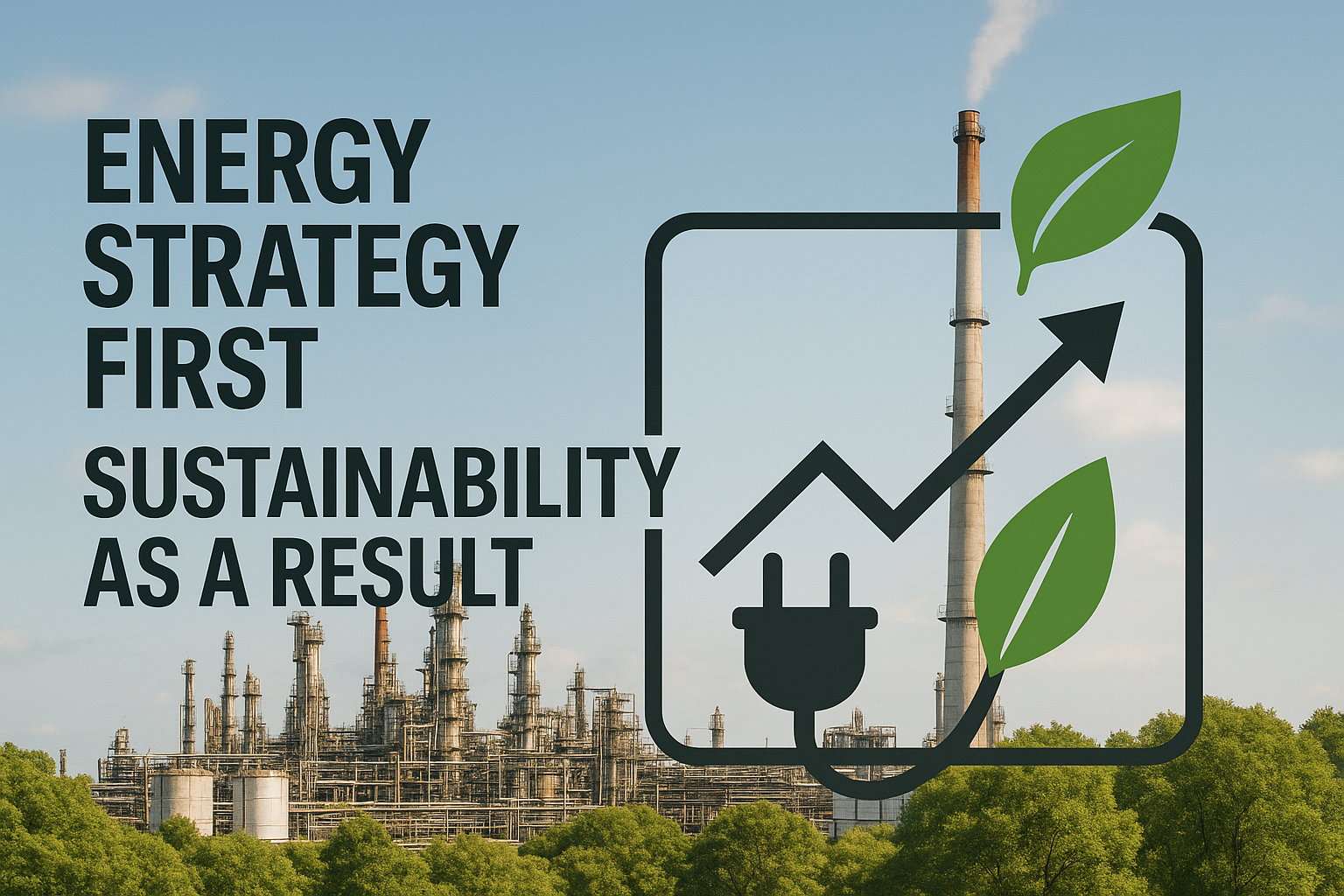Your refinery’s Fluid Catalytic Cracking (FCC) unit quietly generates much of the plant’s cash flow, turning heavy feed into gasoline, LPG, and light olefins. But even small shifts in gasoline or propylene output can wipe out healthy margins overnight.
Traditional advanced process control (APC) has pushed these units close to their limits, yet complex interactions among riser temperature, cat-to-oil ratio, and catalyst activity still leave significant value on the table.
1 in 3 CEOs (33%) report that AI has increased revenue over the past year. For FCC operations, AI offers a new path to value —one that’s data-driven, dynamic, and adaptive in real-time. Modern industrial AI changes this equation by modeling the intricate relationships across thousands of data points in real time, uncovering optimization opportunities that conventional approaches miss entirely.
This seven-step playbook shows you how to turn that modeling power into measurable profit improvements, from defining clear KPIs to implementing closed-loop control that delivers immediate returns and long-term competitive advantage.
Step 1 – Know Your FCC Unit & Its KPIs
Your FCC riser vaporizes and cracks heavy feed, the regenerator burns coke to revive catalyst, and the fractionator splits the cracked vapor into gasoline, LPG, light olefins, and other streams. Each zone influences the next, creating a highly nonlinear, interdependent process that varies over time. Capturing value starts with tracking the right numbers.
Focus on gasoline, LPG, and olefin yields, overall conversion, catalyst activity and loss, riser temperature, cat-to-oil ratio, cut-point settings, energy use, and emissions. Every percentage point of gasoline yield or delta-coke reduction swings unit profit, yet chasing a single metric often sacrifices another.
Before deploying any AI models, confirm a reconciled material balance, recent sample results, and up-to-date sensor calibration records. The model needs one accurate version of reality to deliver reliable improvements.
Step 2 – Identify Your Biggest Optimization Opportunities
Start by drawing a simple impact-feasibility matrix. On one axis, list how much profit each constraint can release; on the other, how quickly you can act on it. Even before any code is written, the exercise forces you to collect the right voices, operations, planning, maintenance, and agree on what “biggest” really means.
Typical FCC pain points fall neatly into this framework. Feed variability handling often delivers the highest impact but requires significant data infrastructure. Slide-valve constraints and regenerator temperature management sit in the sweet spot of high impact with moderate implementation complexity. Wet-gas compressor capacity and cyclone losses typically offer quicker wins but smaller profit improvements.
For every item, jot down the data you’ll need. Feed variability demands historical assays, online analyzer trends, and catalyst circulation rates. Slide-valve analysis leans on valve-position tags and differential pressure. Regenerator temperature work needs flue-gas oxygen and coke burn rates, while compressor and cyclone reviews rely on flow, vibration, and loss-on-ignition metrics pulled from your historian and event logs.
You’ll quickly notice gaps; they usually sit at the seams between economics and operations teams and can mask millions in lost margin. Industrial AI uncovers those blind spots by running multivariable analysis across the entire data set, exposing interactions too subtle for spreadsheets to catch.
Step 3 – Collect & Prepare High-Quality Data
You need at least a few months of one-minute historian data before an AI model can learn your FCC’s operational patterns. Anything less and the model will miss slow catalyst changes, seasonal feed swings, and rare upsets that drive big profit swings. The more data you provide the model, the better it will learn all possible operating modes within a catalyst cycle.
Gather every signal that shapes yield, not just the obvious temperature and flow tags. This comprehensive dataset must include process variables from the distributed control system (DCS), operator event logs and shift notes, laboratory quality results and sample timestamps, catalyst circulation, activity, and loss metrics, plus economics data covering product prices, utility costs, and crude differentials.
Raw numbers are only the starting point. Create a clean dataset the model can trust by following a strict routine. Detect gaps, flag suspicious flatlines, and interpolate only when justified. Align time stamps across all sources to the same clock while correcting sensor drift using routine calibration records. Remove outliers that violate material balance checks and normalize scales to prevent pressure readings from overshadowing trace-level analyzers.
When these steps converge, you establish a unified data foundation that advanced AI and your control room can trust. This consistent view across all data sources becomes the foundation for reliable optimization decisions.
If problems persist, tackle them methodically by re-mapping or replacing missing tags, backfilling late lab results with validated inferentials, and tagging prolonged upsets so the model learns without bias. Maintaining auditable data workflows also satisfies safety and environmental regulators, letting you focus on turning insight into yield improvements.
Step 4 – Train AI Models to Predict & Optimize Yields
Choosing the right AI implementation shapes how far you can push your FCC unit. Multivariate regression gives you quick, highly interpretable coefficients, but its linear framework struggles once feed quality, riser temperature, or catalyst activity interact in nonlinear ways.
Reinforcement Learning (RL) adapts in real time and navigates complex trade-offs, though it demands large training sets and a safe sandbox before touching live controls.
Start by defining a profit objective, then split clean data into train/validate/test sets. Tune hyperparameters and back-test against historical upsets. Hard-wire first-principles limits—riser temperature ceilings, cyclone delta-P, regenerator oxygen, to keep the model inside safe boundaries.
Use dropout or cross-validation to prevent overfitting, and pair each prediction with explainability so operators trust the recommendations instead of treating them as a black box.
Step 5 – Deploy Real-Time Closed-Loop Control
Start by streaming your validated historian tags into an AI engine that sits alongside the distributed control system (DCS). Once the model mirrors plant behavior, let it run in advisory mode, posting recommended riser temperatures, cat-to-oil ratios, and cut-point moves to an operator dashboard.
You and your team compare those suggestions with existing APC moves to verify safety margins and economic lift. When you’re confident, typically after a few weeks of side-by-side review, grant the AI permission to write setpoints back to the DCS, always inside pre-defined equipment and emissions constraints.
Operator trust remains pivotal. Transparent dashboards clearly explain which variables the model adjusts and why, while a single-click override allows for manual control at any time.
Behind the scenes, the model learns from every cycle, retraining when feed slates change or conditions shift, and all adjustments move through your Management of Change workflow for audit readiness.
Step 6 – Monitor Results & Iterate
Once the closed-loop model is running, you need proof it can grow profits. Track incremental profit per barrel, gasoline and LPG yield shifts, delta coke, energy use, and regulated emissions in one live dashboard so front-line teams see the impact every shift.
Match monitoring to your plant rhythm. Review the dashboard each day, hold a weekly control-chart session with operations and economics, and compare 30-day windows against the pre-AI baseline.
If value erodes, start with basics, sensor health, material balance, and recent operating changes, before retraining. Many plants refresh models quarterly, but unexpected feed swings or equipment work can trigger an ad-hoc update. Feed every lesson back into constraints and profit weights so your optimization loop keeps learning rather than repeating yesterday’s logic.
Step 7 – Scale & Institutionalize Best Practices
Once AI optimization delivers steady improvements on your FCC, the fastest route to greater impact is extending the same approach to adjacent systems. Alkylation, hydrotreaters, and crude or vacuum distillation all benefit from the same data-first discipline before moving to integrated, refinery-wide optimization.
The underlying AI models capture nonlinear cause-and-effect relationships, making them readily adaptable to other complex systems with proven success across multiple refinery processes.
Governance turns technical successes into sustained profit. Establish an AI steering committee that meets quarterly to review KPIs, approve model updates, and enforce accountability for each business objective. Clear ownership keeps optimizers aligned with real-time economics and safety constraints.
Change management remains essential. Celebrate early wins publicly, enlist operations champions to tell the story, and maintain a live dashboard that translates yield and energy improvements into daily dollars saved. Transparent ROI tracking quiets skepticism and secures ongoing investment.
Equip your workforce for an AI-enabled future. Structured training sessions, peer mentoring, and a dedicated learning portal give engineers and operators the skills to validate model suggestions, adjust constraints, and suggest new optimization targets. As your team’s confidence grows, institutionalizing best practices becomes a natural extension of routine plant-specific operations.
How Imubit Accelerates AI-Driven FCC Yield Gains
When you need results quickly, Imubit’s Closed Loop AI Optimization (AIO) provides a unified view of your FCC operations. The solution streams historian, lab, and economic data into one continuously learning model. It writes real-time setpoints back to the distributed control system (DCS), turning every small disturbance into an opportunity for profit through its closed-loop AI approach.
Plants report gasoline yield growth, lower delta coke, and measurable energy savings within weeks. If you’re ready to translate AI into dollars, schedule your free AIO Assessment to see what closed-loop control could deliver for your FCC—and why Imubit stays by your side as a long-term partner.




